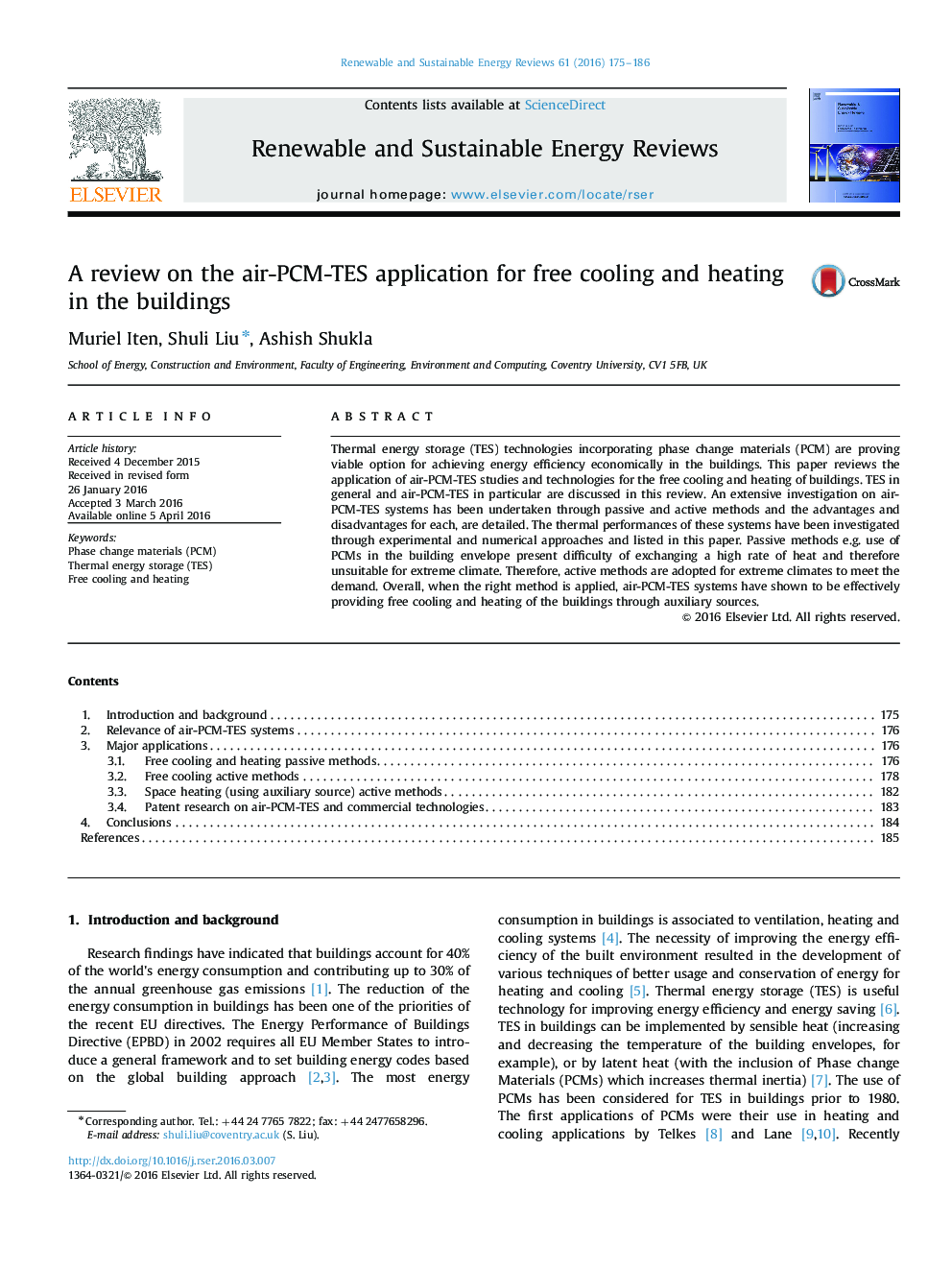| Article ID | Journal | Published Year | Pages | File Type |
|---|---|---|---|---|
| 1749790 | Renewable and Sustainable Energy Reviews | 2016 | 12 Pages |
Thermal energy storage (TES) technologies incorporating phase change materials (PCM) are proving viable option for achieving energy efficiency economically in the buildings. This paper reviews the application of air-PCM-TES studies and technologies for the free cooling and heating of buildings. TES in general and air-PCM-TES in particular are discussed in this review. An extensive investigation on air-PCM-TES systems has been undertaken through passive and active methods and the advantages and disadvantages for each, are detailed. The thermal performances of these systems have been investigated through experimental and numerical approaches and listed in this paper. Passive methods e.g. use of PCMs in the building envelope present difficulty of exchanging a high rate of heat and therefore unsuitable for extreme climate. Therefore, active methods are adopted for extreme climates to meet the demand. Overall, when the right method is applied, air-PCM-TES systems have shown to be effectively providing free cooling and heating of the buildings through auxiliary sources.
